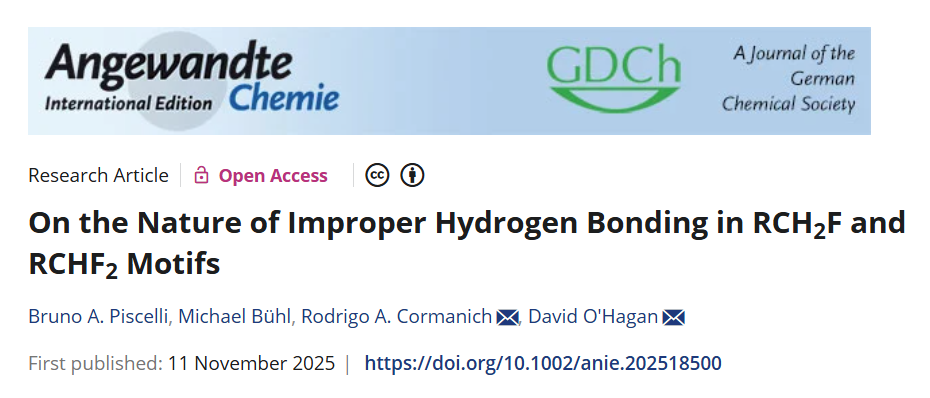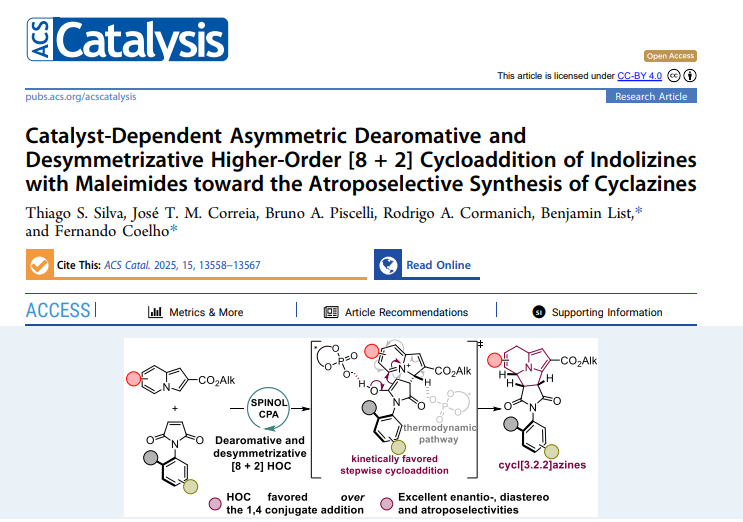New paper in Angewandte Chemie: Improper hydrogen bonding in RCH₂F and RCHF₂ motifs
Congratulations to Bruno A. Piscelli for his new paper published in Angewandte Chemie! This paper was done in collaboration with David O’Hagan and Michael Bühl from the University of St Andrews.
In this work, we use high-level quantum-chemical calculations to understand how partially fluorinated methyl groups (CH₂F and CHF₂) interact through so-called “improper” or “non-classical” hydrogen bonds. These groups are increasingly used in medicinal and agrochemical design because they lower LogP and tune polarity, but their hydrogen bonding behavior is not intuitive. As fluorines are added, the geminal C–H hydrogens actually become less positively charged, which would normally suggest weaker hydrogen bonding. Yet, the interaction with hydrogen-bond acceptors such as chloride or water becomes stronger.
Our results show that the key player is not the hydrogen but the carbon atom attached to fluorine. Fluorination makes this carbon strongly electropositive, and the anion or water molecule preferentially interacts with the CF carbon center. Charge is redistributed from hydrogen toward carbon and fluorine as the acceptor approaches, and the interaction is dominated by electrostatics rather than classical n → σ*(C–H) donation alone. The study also rationalizes when C–H stretching bands show blue shifts (bond shortening) or red shifts (bond elongation) in these systems.
We then extend this analysis to C₃–C₆ rings bearing all-cis CH₂F or CHF₂ substituents and show that they can form surprisingly strong complexes with chloride. Some of these fluorinated alicycles bind anions in solution with strengths comparable to typical urea-based anion receptors, suggesting a new design platform for anion-binding molecules and organocatalysts.
Check the paper at:
Angew. Chem. Int. Ed. 2025, e202518500
https://doi.org/10.1002/anie.202518500


